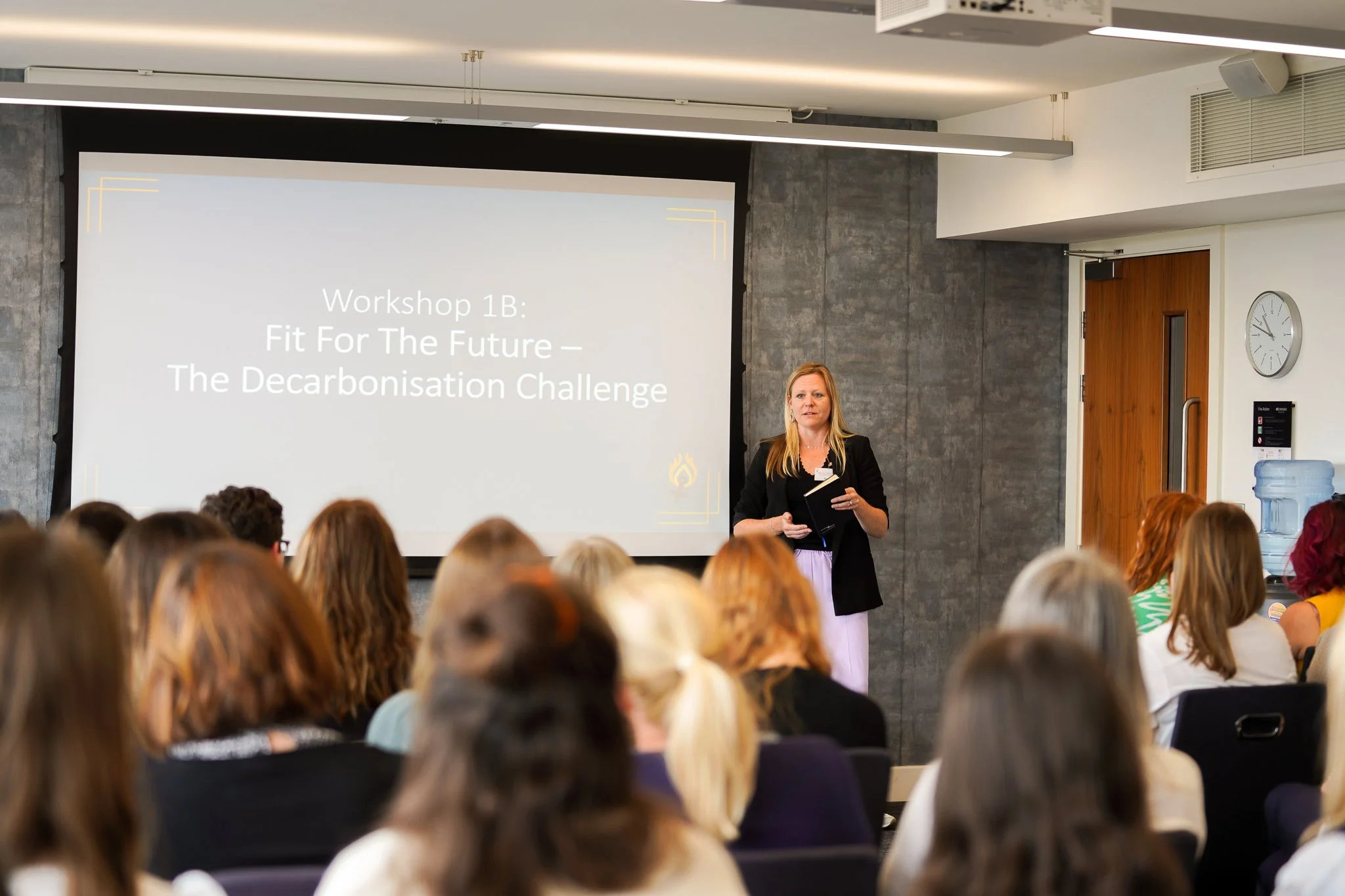CWDH 2023 Recap
Fit for the Future: The Decarbonisation Challenge
At the Divas Conference held in Manchester in early June, we explored the issue of decarbonisation. The heat networks sector faces twin challenges: creating new low-carbon networks and refreshing existing networks for a net zero future. The conference session gave us a chance to explore pathways to decarbonisation and some of the concerns and considerations that will inform decision-making across the sector.
Our panellists
Pippa Corbett, Graduate Energy Engineer at Buro Happold, chaired the session.
Our speaker panel comprised Amy Baker, Project Development Manager, EQUANS; Belinda Humphrey, Energy Operations Team Leader, Gateshead Council; and Ellie Horwitch-Smith, Assistant Director, Route to Net Zero, Birmingham City Council.
We would like to thank Yvonne Gill from Gateshead Council for taking the notes to inform this blog posting.
Setting a roadmap
Many cities and towns have existing heat networks, and the vast majority run on gas CHP. Amy Baker from Equans outlined some work that they are doing on developing roadmaps and timelines for understanding the feasibility of shifting to a decarbonised future.
Amy shared the roadmap for the iconic Queen Elizabeth Olympic Park district energy scheme. The roadmapping process looks at strategic options but also at incremental change and optimisation of the existing network infrastructure.
The strategic shortlisting process identified three main options for decarbonisation at scale: electrification; energy from waste; and geothermal. Incremental gains can be made from the integration of low carbon technologies and wate heat sources on site – such as water source heat pumps in the canal and cooling recovery heat pumps. Optimisation opportunities include looking at improvements funded by the Heat Network Efficiency Scheme and management changes such as reducing network temperatures.
Amy pointed out that the area is constantly evolving, with new buildings being developed around the Olympic Park. Data centres and waste heat sources are often site specific. The roadmapping process used by Equans will be used to help think about the evolution of other city networks towards a decarbonised future.
Finding local innovations
Belinda Humphrey described Gateshead’s existing network and thoughts on decarbonisation. The network is owned and operated by Gateshead Energy Company and uses gas CHP. They have recently secured HNIP funding for the development of a minewater project to help decarbonise and grow the network. Belinda shared a video of solar PV systems which are used to feed in to the minewater pump and heat network. This innovation means that the network can be fully net zero with urban solar on sunny days, so that the CHP only runs through the night. Gateshead’s plans are ambitious – with a new freight depot coming online later in 2023 and a pilot of low-rise social housing development too, which could lead to much bigger things.
Seeing the big picture
Birmingham City Council has a long history with heat networks, serving both residential and commercial premises. Ellie Horwitch-Smith outlined some of the strategic issues that Birmingham is considering when it thinks about decarbonising its heat network portfolio. She identified some challenges: how to juggle multiple opportunities and options towards net zero; recruitment and skills; operating in a dense urban environment; and finding the right investment vehicle.
The dense urban environment can create opportunities: Birmingham has a canal network which, like the Olympic Park, could be used to generate heat through heat pumps. There are other options for renewable heat and waste heat collection – and taking a strategic roadmap approach helps to map these out. Mapping around heat resources and existing networks can also expand into a zonal approach, helping the Council consider how far to go in decarbonising existing buildings and making the best use of existing network infrastructure. Local Area Energy Planning helps to pull this together by looking at available capacity on the grid and building a better understanding of the grid.
Investment is complex. Government grant funding is not always available, but there could be options for different types of investment vehicle or local pension fund investment.
Discussion
The main discussion topics during Q&A were:
Utilising data centres and waste energy – it’s important to map them into plans across an area. Making use of existing sources of waste heat can save time and money, though it’s important to understand their potential lifetime.
Hydrogen – opportunities for using hydrogen are most likely for higher temperature industrial settings, whilst lower temperature requirements (like domestic heat) may be more suited to sources like geothermal. Hydrogen could also be important for transport purposes. Decisions around hydrogen are part of a bigger national and international picture.
Investment – there could be opportunities for local and community investment, perhaps leveraging pension fund investment and looking to harness the pension benefit locally.
Route to net zero – there’s a real sense of organisations mobilising and gaining momentum for reaching Net Zero, with some local authorities targeting 2030. This will mean a need for offsetting and there was interest in how this could be achieved with organisations within a local area rather than paying for options elsewhere in the world.
We hope you enjoyed this recap on one of the sessions from Connecting Women in District Heat 2023. Watch this space for more content soon!
Our thanks to Jodie @photoandflourish for the great pictures on the day.
Ellie Horwitch-Smith
